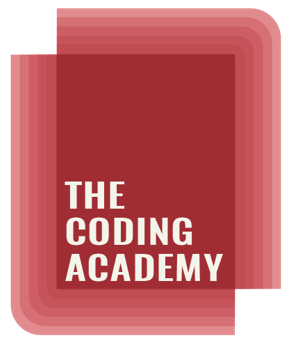
|

|

|
|
anterior chamber
|
(an-tee'ree-or)
frontal
space in the eyeball containing
aqueous humour and bounded by cornea, part of the sclera, iris, part of the ciliary body and that part
of the lens which
presents through the pupil
.
|

|

|

|
|
aqueous humour
|
(ak�wee-uss hyoo'mer)
watery, transparent fluid produced in the eye and
found in the anterior and
posterior chambers of the
eye; helps maintain conical shape of the front of
the globe and assists in focusing light rays on the
retina.
|

|

|

|
|
blind spot
|
(optic disc); area of absent
vision in the visual field caused by the small area
of the retina where the
optic nerve leaves the
eye.
|

|

|

|
|
canaliculus
|
see
inferior and superior
canaliculus.
|

|

|

|
|
canthus
|
(kan'thus)
see inner and outer canthus.
|

|

|

|
|
choroid
|
(ko'royd)
the middle coat
of the eye, lining the majority of the inner surface
of the sclera.
|

|

|

|
|
ciliary body
|
(sil'yar-ee)
ring of tissue
extending from the sclera
, lined by cells that secrete
aqueous humour.
|

|

|

|
|
ciliary muscles
|
(sil'yar-ee)
muscles which
change the shape of the lens
by contracting and relaxing, to focus light
rays on the retina.
|

|

|

|
|
conjunctiva
|
(kon-junk-ti�vah)
mucous membrane which
lines the eyelids and
covers the exposed surface of the sclera.
|

|

|

|
|
cornea
|
(kor�nee-ah)
transparent
frontal layer of the eye.
|

|

|

|
|
crystalline lens
|
(kris�tal-lin)
the lens of the eye.
|

|

|

|
|
extraocular
|
(eks-trah-ok�yoo-lar)
outside the eye.
|

|

|

|
|
eyebrow
|
arched ridge of hairs growing
at the junction of the forehead and upper eyelid, to protect the
eyeball.
|

|

|

|
|
eyelid
|
a moveable fold of tissue,
above and below the front of each eye which protects
the eyeball.
|

|

|

|
|
globe
|
the eyeball.
|

|

|

|
|
inferior canaliculus
|
(kan-ah-lik'yoo-lus)
tube-like structure running
within the lower eyelid,
parallel to the lid margin.
|

|

|

|
|
inferior rectus
|
(rek'tus)
muscle of the eye
which works together with other eye muscles to move
the eye in horizontal and vertical gaze.
|

|

|

|
|
inner canthus
|
(kan'thus)
the angle at the
inner end of the eye between the eyelids.
|

|

|

|
|
intraocular
|
(in-trah-ok�yoo-lar)
inside the eye.
|

|

|

|
|
iris
|
(eye'ris)
coloured membrane
of the eye which separates the
anterior and
posterior chambers; contracts and dilates
to regulate entrance of light rays.
|

|

|

|
|
lacrimal ducts and glands
|
(lak�ri-mul)
system of
ducts and glands which secretes and conducts tears.
|

|

|

|
|
lacrimal sac
|
(lak�ri-mul)
small sac on
the side of the nose, opening into the
nasolacrimal duct
; sucks tears in from the canaliculus and drains them
down the nasolacrimal duct
.
|

|

|

|
|
lacrimal system
|
(lak�ri-mul)
parts of the
eye that secrete and discharge tears.
|

|

|

|
|
lateral rectus
|
(rek'tus)
muscle of the eye
which works together with other eye muscles to move
the eye in horizontal and vertical gaze.
|

|

|

|
|
lens
|
(lenz)
biconvex,
transparent elastic body which lies behind the iris and in front of the
vitreous cavity; changes shape to focus light on the
retina; full name crystalline lens.
|

|

|

|
|
macular lutea
|
(mak'yoo-lah
loo'tee-er)
the yellow spot in the retina of the eye.
|

|

|

|
|
medial rectus
|
(rek'tus)
muscle of the eye
which works together with other eye muscles to move
the eye in horizontal and vertical gaze.
|

|

|

|
|
nasolacrimal duct
|
(nay'zoh-lak'ri-mul)
the
duct that drains tears away from the lacrimal system into the
nose.
|

|

|

|
|
optic nerve
|
(op�tik)
second cranial nerve, concerned
with sight; connects the retina
to the brain.
|

|

|

|
|
orbit
|
bony cavity in the cranium which contains the
eyeball and associated structures.
|

|

|

|
|
outer canthus
|
(kan'thus)
the angle at the
outer end of the eye between the eyelids.
|

|

|

|
|
posterior chamber
|
(pos-tee'ree-or)
the space
containing aqueous humour
between the iris and the
lens and suspensory ligaments.
|

|

|

|
|
punctum
|
(punk'tum)
an elevated
opening toward the medial aspect of each eyelid, opening into a
canaliculus.
|

|

|

|
|
pupil
|
(pyoo'pul)
opening at the
centre of the iris.
|

|

|

|
|
retina
|
(ret'i-na)
the innermost
layer of the wall of the eye containing light
sensitive cells; helps to discriminate between
colour and black and white vision.
|

|

|

|
|
sclera
|
(skleer'a)
the tough, white
outer coat of the eyeball, continuous with the cornea.
|

|

|

|
|
superior canaliculus
|
(kan-ah-lik'yoo-lus)
tube-like structure running
within the upper eyelid,
parallel to the lid margin.
|

|

|

|
|
superior oblique
|
(ob-leek')
muscle of the
eye which works together with other eye muscles to
move the eye in horizontal and vertical gaze.
|

|

|

|
|
superior rectus
|
(rek'tus)
muscle of the eye
which works together with other eye muscles to move
the eye in horizontal and vertical gaze.
|

|

|

|
|
vitreous humour
|
(vit�ree-uss)
transparent
jelly-like substance which fills the vitreous body
at the rear of the eye.
|





